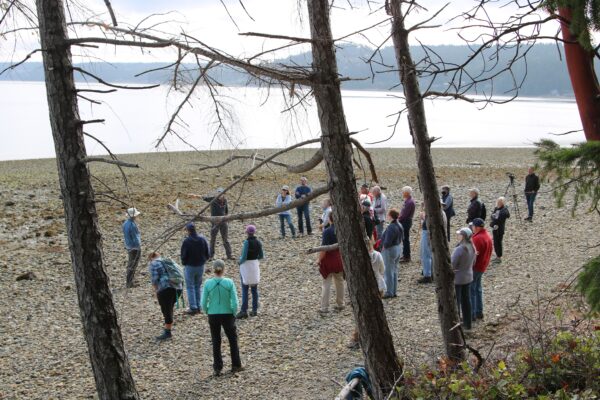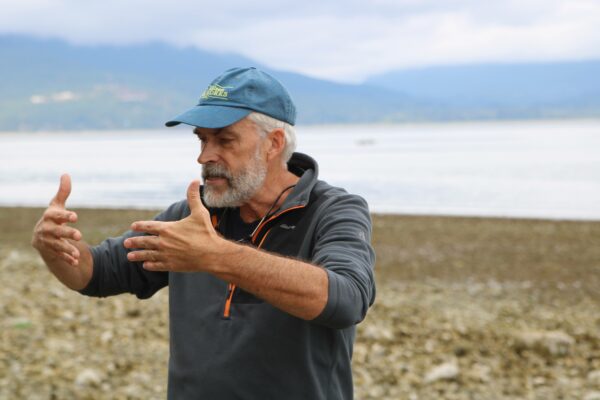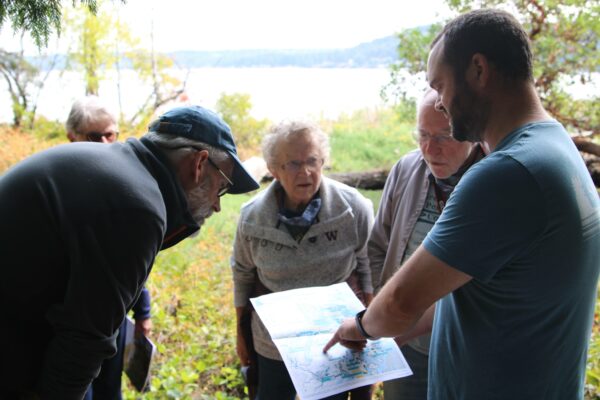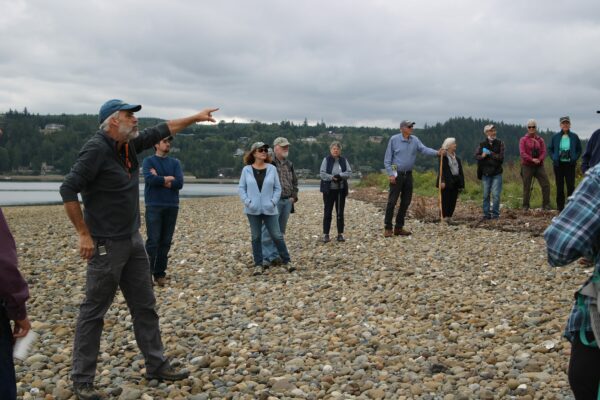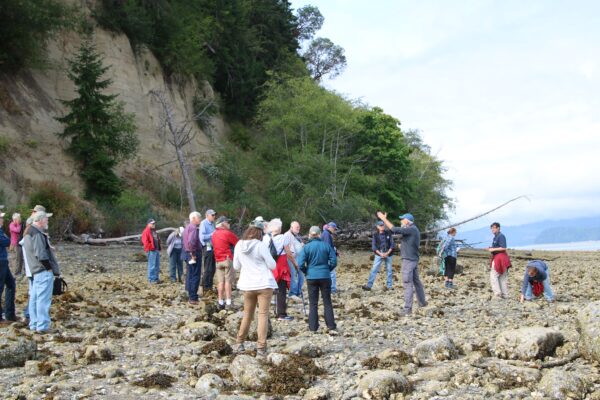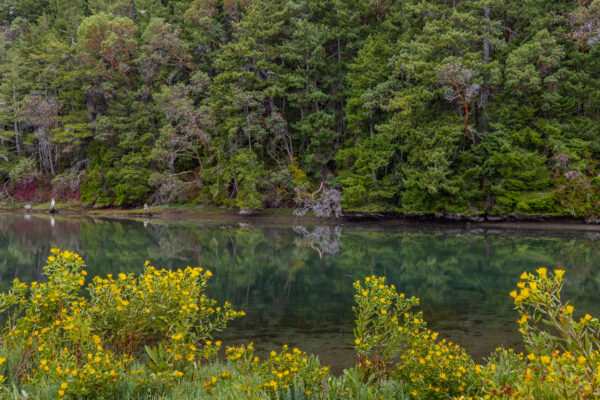At the end of August, 24 GPC members and neighbors gathered at the Misery Point Preserve near Seabeck for our second installment of the Walk and Talk series. Hugh Shipman, a retired Department of Ecology Coastal Geologist of 30 years, walked us through the glacial history of the bluff and present-day erosion and accretion processes that shape the barrier beach and lagoon.
The bluff is comprised of glacial sediment that melted out when the last glacier retreated, roughly 15,000 years ago. At its extent, the ice reached thicknesses of approximately 3,000 feet. The landscape we see today formed about 6,000 years ago when sea level reached its present-day level. Puget Sound bluffs erode at a rate of about one foot every decade though, as Hugh observes, the draped fir trees flanking the bluff indicate that this bluff hasn’t eroded for the entire lifetime of the trees.
The term feeder bluff describes the ‘conveyor belt’ of sediment that feeds the barrier beach along the shoreline to the east of the bluff. During large storm events, materials from the bluff are picked up by large waves, transported parallel to the shore, and then deposited onto the lagoon.
Looking under our boots, Hugh notes that the beach isn’t one good for sunbathing; the barnacle-strewn boulders make for slow walking and create a layer of protection for erosion during big storms. The last big storm in this region was in 1990, when northerly winds devastated the Seabeck Marina. That kind of event contributed to the formation of the barrier beach spit. Hugh estimates the spit to be about 1,000 years in the making, and that as long as there is still a bluff and storms, the spit will continue to grow.
Hugh points out that the lagoon behind the spit provides a unique habitat for plants and wildlife due to the low-energy saline environment. A noisy belted kingfisher chatters in the background when we talk about the sticky gumweed. Preserving the lagoon and spit are important for eel grass and feeder fish like smelt, which support salmon populations.
Misery Point is open to the public for day use. GPC will be posting activity use signage and property boundaries in the coming weeks.


